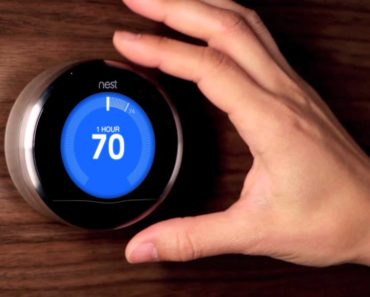Whether you have a pup with a penchant for persistent barking, or you’d like to train your dog to stay in the yard, you may have considered a shock collar, electronic collar (e-collar) or remote training collar. As with any method of behavior modification, there are pros and cons. Ultimately, it’s up to you to choose what method works best for you and your pets, so we’ve laid out the facts to help you decide.
Best Shock Collar For Dogs: Petsafe Yard & Park Rechargeable Collar Review
If you do decide that a shock collar is the right training device for your dog, we recommend the PetSafe Yard & Park Remote Dog Trainer for its eight levels of correction, beep-only option, rechargeable battery and 400-yard range. It’s a little more expensive than some of the other electronic options out there, but it gives you more control and therefore a more positive training experience for your pup. It also allows you to train your dog with a much more mild tingle on levels one–three, rather than starting out with an intense shock.
How Does A Shock Collar Work?
Shock collars are a type of aversive training initially used in the 1960s to train hunting dogs. These days, shock collars are often used to curb a variety of stubborn and unwanted behaviors in family dogs, from excessive barking to food aggression, as well as to train pups to stay safely within a property line or to stick close by while off leash.
Shock collars are not intended as a punishment, but more as a deterrent to train negative or unsafe behavior out of a dog. The theory is that your dog will associate the unwanted behavior with an uncomfortable shock and stop doing it until they no longer require the reminder.
The shock administered by an approved shock collar is safe, so while it is certainly enough to get your dog’s attention and deter certain behaviors, it won’t do any lasting physical harm. With most shock collars, there are several levels of enforcement, so you can set the level to reprimand the unwanted behavior accordingly. For example, many shock collars will administer a beep and/or a vibration as a warning before an actual shock is delivered to your dog. The beep also allows you to give a verbal command (“No!” or “Down!”) with the warning beep or vibration to further disrupt the unwanted behavior. With boundary training (often marketed as an electric fence or an invisible fence), the shock collar is triggered by wires placed underground along the property line so the dog learns exactly how far they can go before they reach the boundary.
Once set to “shock” mode, there are usually varying levels of intensity delivered by a two-pronged device attached to a dog collar. If you’re using a shock collar as a barking deterrent, the collar responds to the vibration of your dog’s vocal cords. If you’re using the collar to deter behavioral issues like food aggression, jumping or leash aggression, a remote control allows you to administer the shock in conjunction with the unwanted behavior.
And keep in mind, using a shock collar doesn’t make you a bad pet parent, and it doesn’t mean you are torturing your dog. It is unlikely that an electronic training collars would destroy your relationship with your dog. In fact, shared training sessions could improve your bond with one another.
Eight Things to Know Before Buying a Shock Collar
We have chosen four pros and four cons that we think everyone should consider before using or purchasing a shock collar for a dog. Please be sure to read these carefully, and feel free to ask us any questions you have about the pros and cons of using a shock collar.
Pros of Shock Collars For Dogs
1. Adjustable Intensity
Most modern shock collars give you the flexibility of a warning beep or vibration mode, and adjustable settings on the levels of shock, which can be comforting to people are who are on the fence about using a shock collar. Other collars, such as spray collars, which administer a harmless but foul-smelling blast up a dog’s snout, are usually not adjustable.
2. Fast Results
Some pet owners report that it only took a few shocks to correct an unwanted behavior in their dog and after that, the beep or vibration was warning enough. Shock collars can also be very effective at keeping your dog on your property, which will help keep them safe while giving them freedom. Of course, more stubborn dogs may take longer to train.
3. You Don’t Need to Be Present
Shock collars, when used to control chronic barking, work even while you’re away from home or inside the house. This can be especially helpful if you’ve had neighbors complain about your dog’s loud protests while you’re out. The same goes for shock collars as boundary control, although they do require some hands-on training. Of course, we don’t recommend leaving your dog unattended outside for extended periods of time, with or without a shock collar.
4. Affordable
A shock collar can be a cheaper alternative to a professional dog trainer or a fence. Shock collars range from $25 to about $200, depending on features such as remote control, adjustable warning/shock levels, a range of distances (usually 30 to 400 yards), and the number of collars included.
Cons of Shock Collars For Dogs
1. The Shock
Most pet owners can’t fathom causing pain to their pet. But even with the ability to control the intensity of the shock, you are still using aversive behavior modification. Many dog trainers choose positive reinforcement (reward) as a means of behavior modification over negative feedback.
2. The Fear
Fear in dogs can be dangerous, so you never want to train a dog with fear. With shock training, some dogs may learn to fear people, objects, or situations they associate with the collar. One pet owner we know said their dog refused to go outside after training with the invisible fence they installed and started urinating in the house instead of going to the back door.
3. Over-Correction
Without you there to control when a shock is administered, automatic bark collars and electric fences may deliver shocks unintentionally or too often. This unnecessary shock could confuse your dog by “correcting” a problem that was not even there.
4. No Positive Reward
On their own, shock collars don’t reinforce good behavior with a positive reward such as your affection, verbal approval (“Good boy!”) or a tasty treat. So while a shock collar may effectively deter negative behaviors like jumping on visitors or running after the mail carrier, it doesn’t reward positive behavior such as sitting patiently or obeying a command to “Stay!”. As with any training, you should always reinforce positive behavior with a reward of affection, playtime or a small treat.





